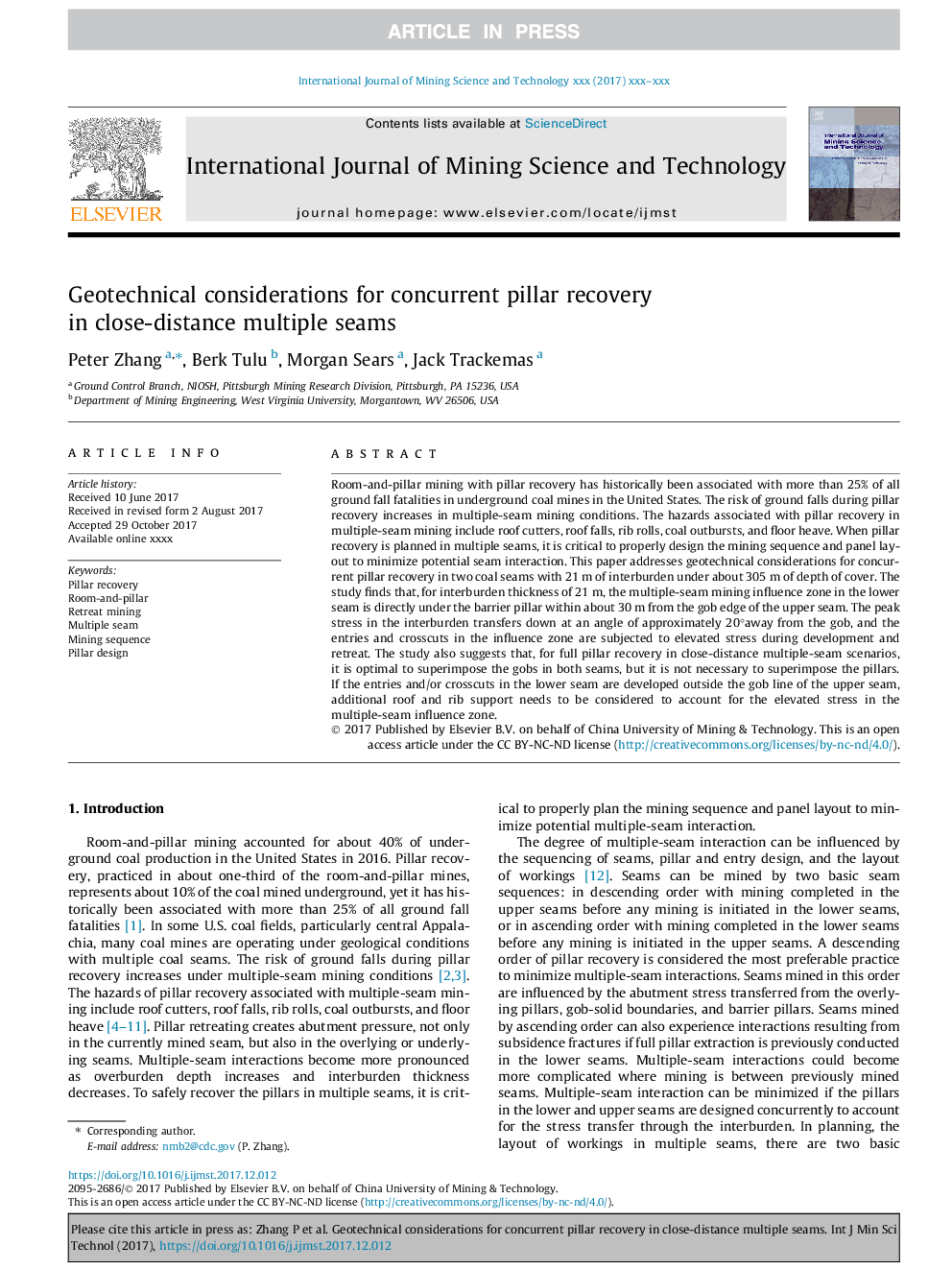| Article ID | Journal | Published Year | Pages | File Type |
|---|---|---|---|---|
| 6747814 | International Journal of Mining Science and Technology | 2018 | 7 Pages |
Abstract
Room-and-pillar mining with pillar recovery has historically been associated with more than 25% of all ground fall fatalities in underground coal mines in the United States. The risk of ground falls during pillar recovery increases in multiple-seam mining conditions. The hazards associated with pillar recovery in multiple-seam mining include roof cutters, roof falls, rib rolls, coal outbursts, and floor heave. When pillar recovery is planned in multiple seams, it is critical to properly design the mining sequence and panel layout to minimize potential seam interaction. This paper addresses geotechnical considerations for concurrent pillar recovery in two coal seams with 21â¯m of interburden under about 305â¯m of depth of cover. The study finds that, for interburden thickness of 21â¯m, the multiple-seam mining influence zone in the lower seam is directly under the barrier pillar within about 30â¯m from the gob edge of the upper seam. The peak stress in the interburden transfers down at an angle of approximately 20°away from the gob, and the entries and crosscuts in the influence zone are subjected to elevated stress during development and retreat. The study also suggests that, for full pillar recovery in close-distance multiple-seam scenarios, it is optimal to superimpose the gobs in both seams, but it is not necessary to superimpose the pillars. If the entries and/or crosscuts in the lower seam are developed outside the gob line of the upper seam, additional roof and rib support needs to be considered to account for the elevated stress in the multiple-seam influence zone.
Related Topics
Physical Sciences and Engineering
Earth and Planetary Sciences
Economic Geology
Authors
Peter Zhang, Berk Tulu, Morgan Sears, Jack Trackemas,
